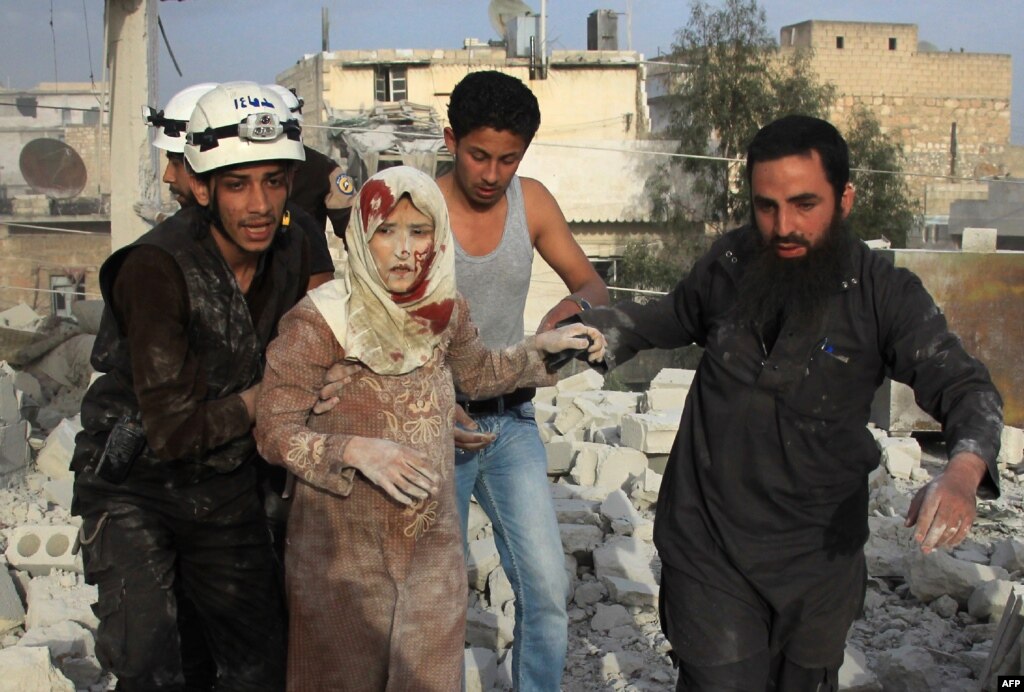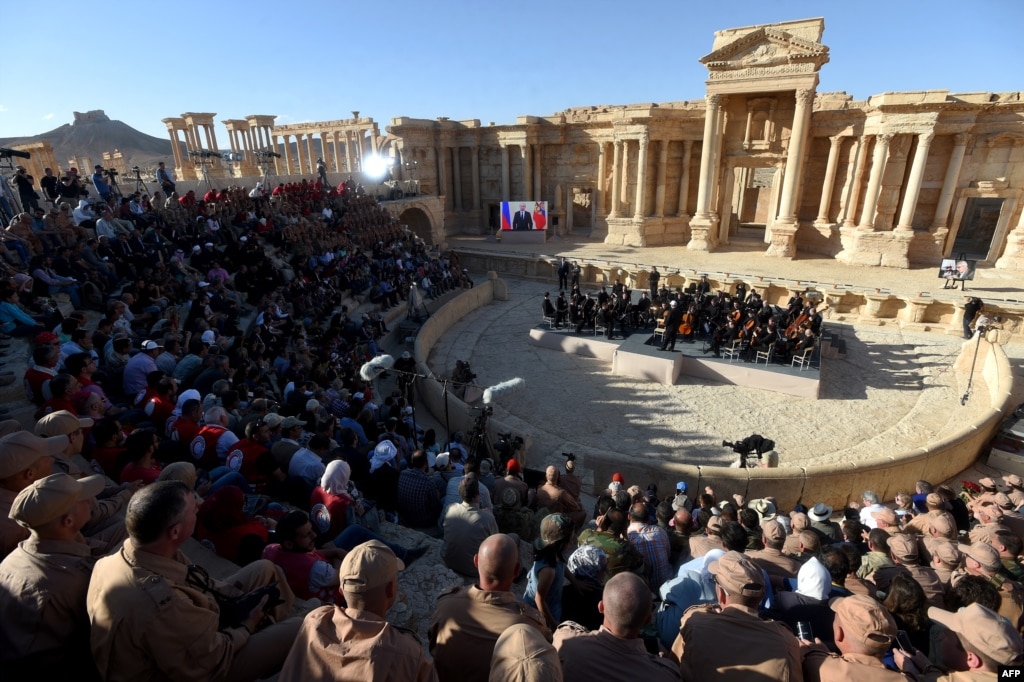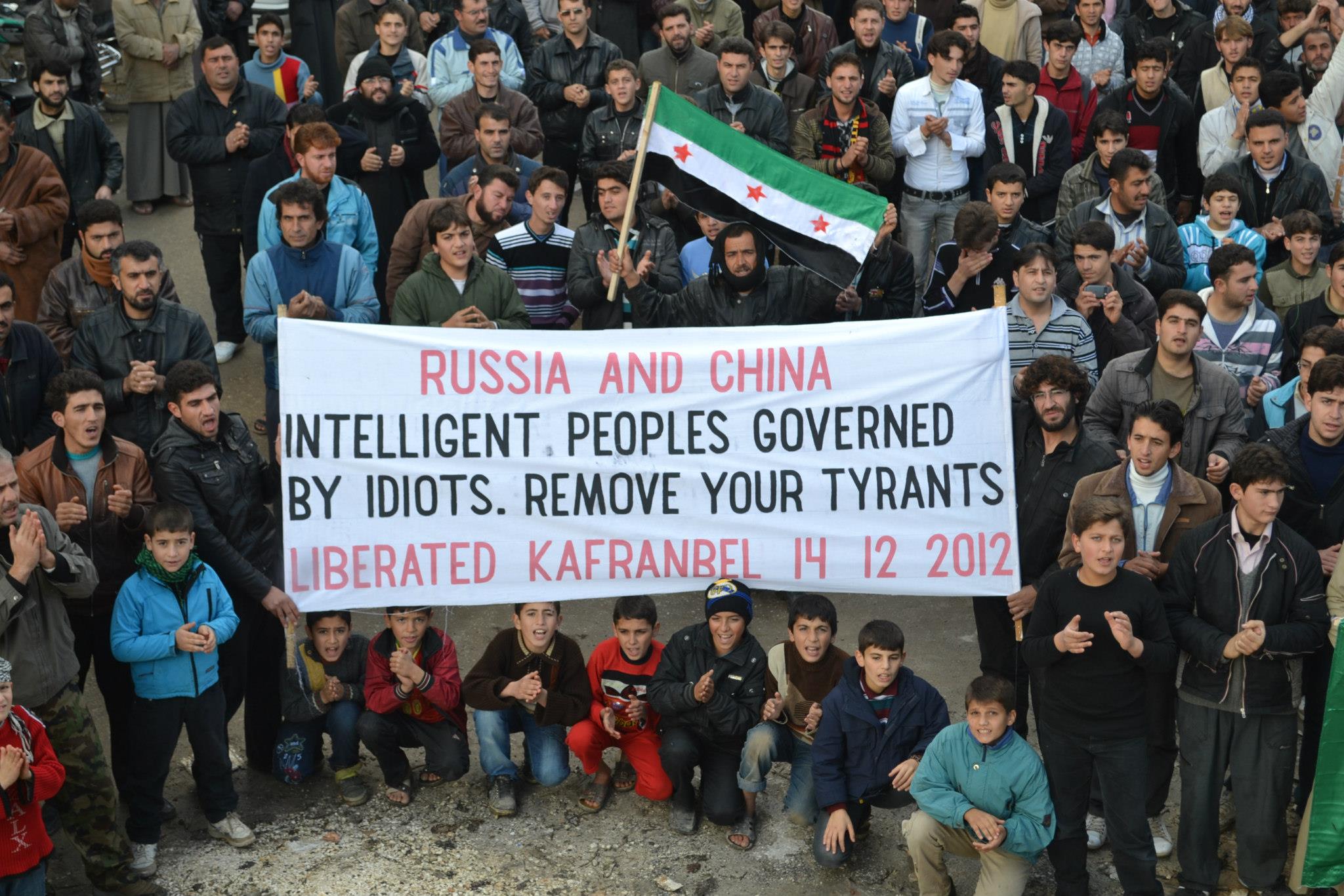The previous post in our Putin in Syria column can be found here.
Note: This is an updated version of a story that was published on December 8, 2016.
ISIS has entered Palmyra, marking its first major victory and its first recapture of a city since the Islamic State began to collapse this summer. The BBC reports that the extremist group has reentered the city nine months after Russia led the effort to “liberate” the ancient site:
The activist-run Palmyra Co-ordination Collective said IS militants had seized the city’s military warehouse and its northern and western districts after taking government positions, oilfields and strategic heights in the surrounding countryside in a three-day campaign.
The British-based Syrian Observatory for Human Rights said IS fighters had reached the city’s hospital and its strategically located wheat silos.
“IS entered Palmyra on Saturday and now occupies its north-west,” said Rami Abdel Rahman of the Syrian Observatory for Human Rights.
“There is also fighting with the army in the city centre,” he added.
Last summer, the Russian government spearheaded the effort to recapture the city from ISIS. ISIS withdrew, having barely fired a shot, and despite weeks of warnings that ISIS had planted mines and booby-traps all over the area, none of them seemed to have gone off. Quickly, the coalition that supports Assad — made up of Hezbollah extremists, Iran’s Islamic Revolutionary Guard Corps (IRGC) commandos, Shi’ite militias from Iraq and Afghanistan, and Russian soldiers and private military contractors — recaptured the city. Russia’s real goal was two-fold: the capture of oil and gas fields in the area, and the symbolic victory of recapturing such an iconic city.

If The Goal Is To Defeat Islamic State, Don't Rely On Russia To Help
Three historic developments have taken place in Syria in the last month and a half. Any of these events could have substantial impact on the collective efforts to combat IS, but each of them is clouded in myth, distortion, and broken promises.
Soon thereafter, the Russian government flew foreign journalists, and an orchestra, to the city to hold a public relations stunt to show that Russia was leading the fight against terrorism. Meanwhile, experts continued to warn that Russia and Assad were barely fighting ISIS at all, and most of their attacks were against moderate, CIA-backed rebel groups, some of which were actually fighting ISIS, and of course civilians.
The whole campaign was for show.

Western Media Swallow Putin's Syria Narrative
It's been a banner week for the Kremlin's propaganda machine. At home, and across the border in the parts of Ukraine held by Russia-backed separatists, Russian military hardware was out on display for the May 9 Victory Day parade marking the defeat of the Nazis in World War II.
While Russia and Assad are focused on flattening and then retaking Aleppo, and bombing markets in Idlib province — both of which have no ISIS presence — they have ignored the threat to Palmyra which has been growing for weeks and now the city appears to have been overrun by terrorists.
Robert Ford, the former US ambassador to Syria, has shared his own thoughts on Twitter. Following the news that the US will be sending 200 more troops to Syria to fight ISIS, Ford tweeted:
“Future Russian allies” appears to be a reference to the close ties between the administration of President-elect Donald Trump and the Russian government. Trump has repeatedly called Putin an ally on the war against ISIS, despite the clear evidence, further supported by today’s developments, that Russia is not focused on defeating ISIS in any concerted way.
Khaled Al Homsi — archaeologist from Palmyra who spent his life studying the artifacts there before fleeing to Turkey where he currently resides — told The Interpreter that Russian and Syrian troops had withdrawn from the city weeks ago and it ISIS had received almost no resistance in the last several days. Al Homsi and other opposition sources reported that only a small number of Iraqi militiamen were left to defend the city.
Putin and Assad have too few forces and different priorities
The question is why Russia and Assad would let Palmyra fall when they put so much emphasis into the capture of the city over the summer.
The simple and obvious answer is that Russia and Assad are distracted in their campaigns in the north, in Aleppo and Idlib. But the longer answer is that the capture of Palmyra was for show, and that show is no longer needed.
The Russian/Assad strategy has been to mostly ignore ISIS and focus on three main goals:
1. Crush the moderate opposition forces, particularly the ones with foreign support.
2. Drive refugees from Syria into neighboring Western allied states (states which are increasingly electing anti-migrant and pro-Putin governments) through bombing of civilians and infrastructure.
3. Crush the resolve of any opponents to the Assad regime who remain in the country, and crush the very idea of revolution.

What Vladimir Putin Learned From The Arab Spring
Five years ago the world was glued to Twitter, Internet news agencies, and live television, where one could watch the "old world order" fall apart in real time. On December 19, 2010, Mohamed Bouazizi's vegetable cart, his livelihood, was seized by Tunisian police.
Palmyra no longer fits into this plan. The only reason Russia has ever targeted ISIS was to maintain the narrative that they were fighting ISIS in order to avoid international consequences. With the election of pro-Russian governments in parts of Europe, and with Donald Trump headed to the White House, Russia can focus on the key aspects of its plan in northern Syria.
There is another reason, though, why letting ISIS take Palmyra might be necessary — despite its recent victories, the Syrian military is in shambles. Large amounts of Syrian troops and equipment have been destroyed or captured in the fighting. Perhaps more than half of the Syrian military defected in 2011-2013, which allowed the anti-Assad rebels to capture large portions of the country. Many of Assad’s troops are not loyal, which is why they have been confined to base for years. Russia’s own estimates, which rely on Syrian military claims, suggest that Assad only has 20,000 troops it can deploy in the field — and the Syrian military is known to greatly exaggerate its strength:

A Rising Star in the Russian Military Killed in Syria
A high-ranking Russian officer, Col. Ruslan Galitsky, who was accused of commanding pro-Russian separatists in eastern Ukraine, has been killed in Aleppo, Syria. Russian President Vladimir Putin personally confirmed the colonel's death.
Since the groups that are supporting Assad make up the bulk of the pro-Assad coalition, ISIS may be a distraction that Russia and its allies cannot afford to focus on.
Two days ago we predicted that the sudden fall of Palmyra may spark the pro-Assad coalition into action. Palmyra controls the key road that runs from ISIS-occupied Iraq to Homs and ultimately Damascus. Russia may not want to address this threat, but it may have to, especially since an increasingly-desperate and shrinking Islamic State may lash out in unpredictable ways if it smells weakness outside of its current zones of control.
That prediction appears to have come true. Russia has reportedly carried out a series of airstrikes today against the advancing ISIS troops: